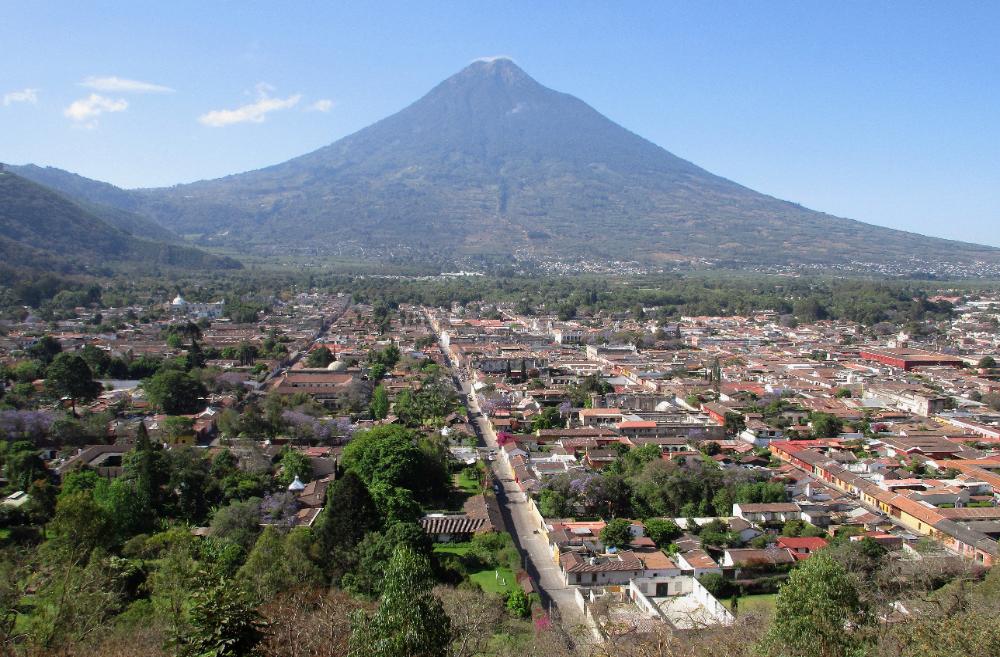
Where We Be
| The more time we spent in Antigua, the more we liked it. It has an easy pace of life, friendly locals, beautiful surroundings, tons of restaurants, a lovely central square, and a good balance of busy and quiet streets. Just wandering around is a pleasure. |
| Another block or two southeast is San Francisco Church, the first church built in Antigua back in the 16th century. It was seriously damaged (I'm sure you're wondering by what) and largely rebuilt in the 1960s. |
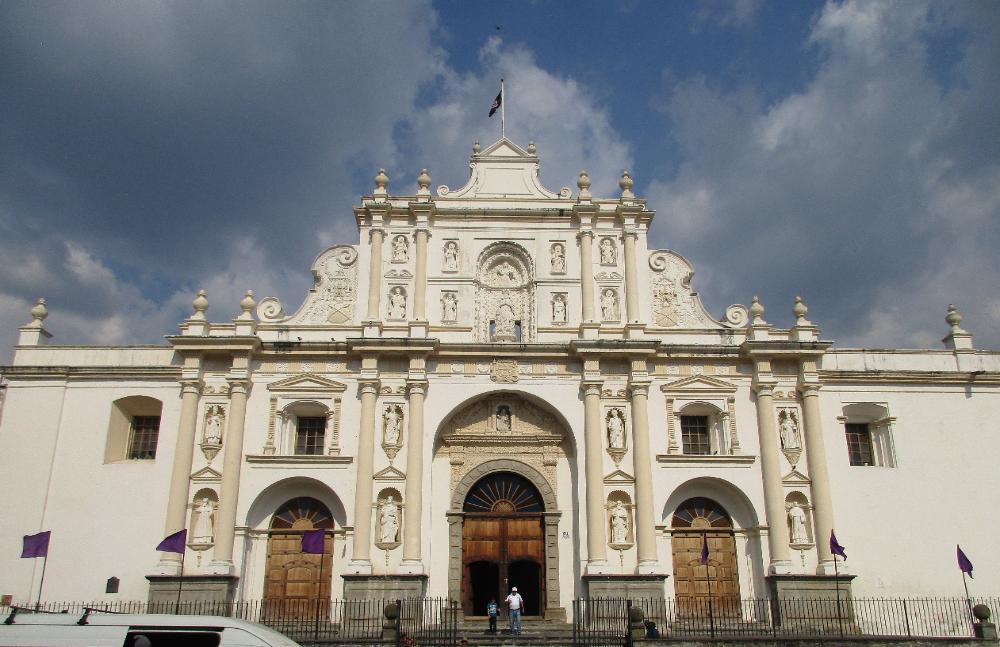
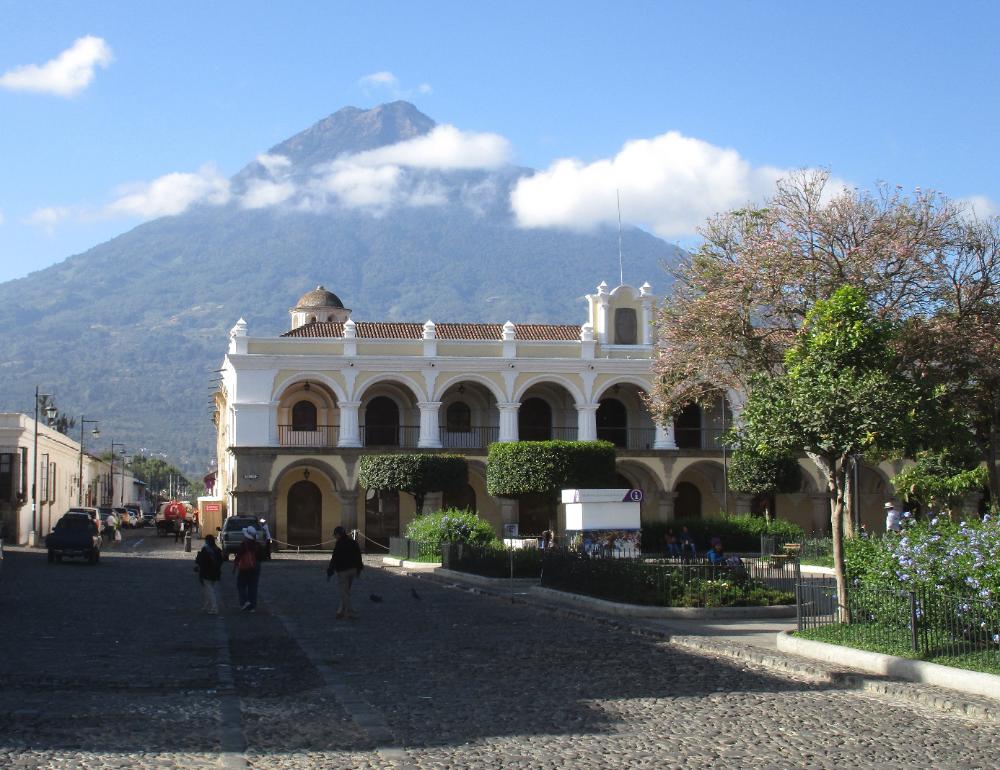
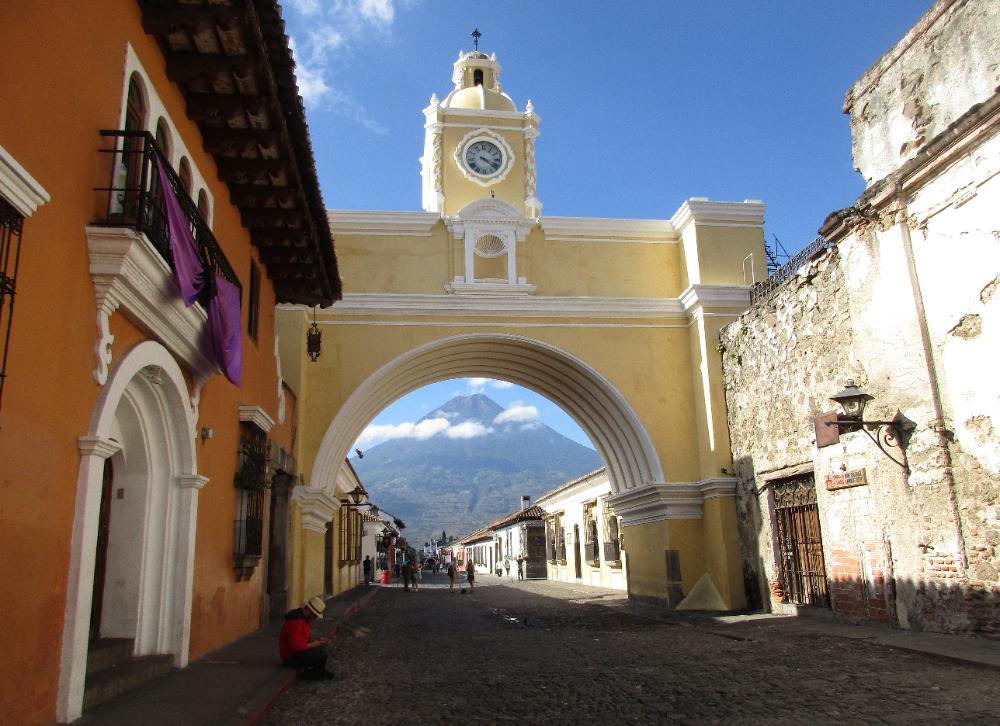
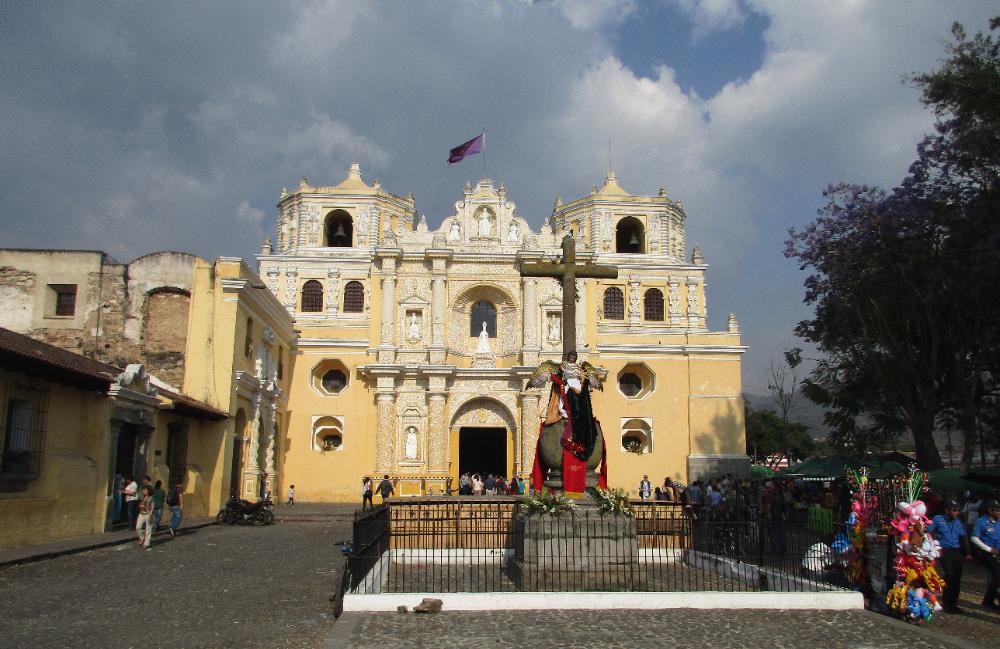
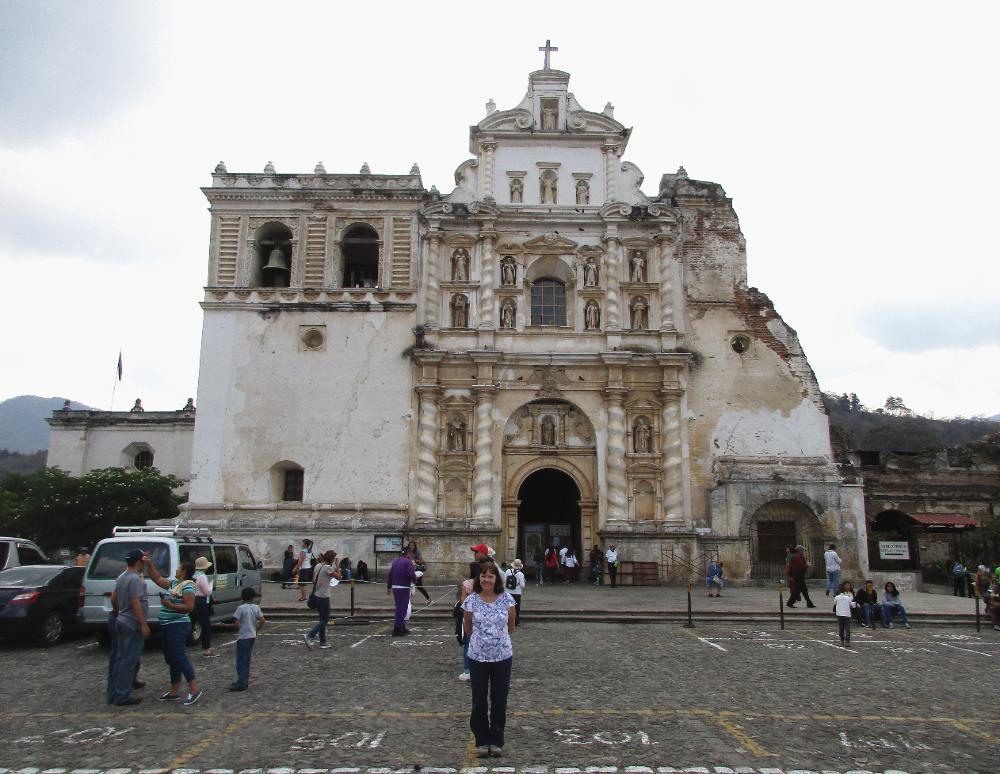
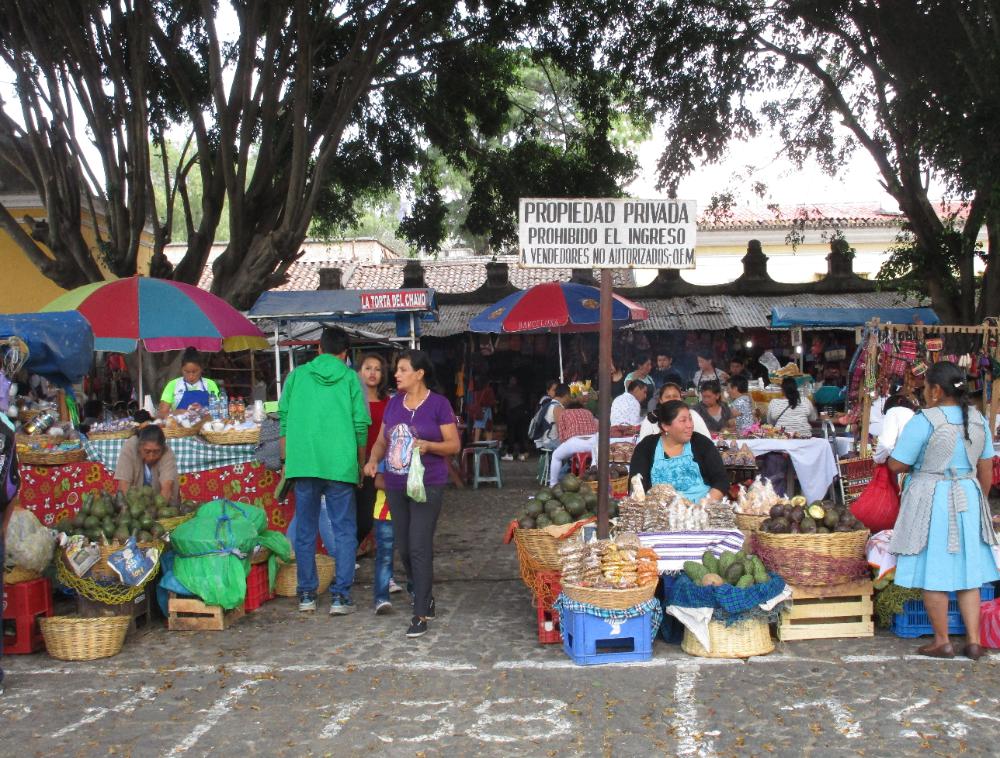
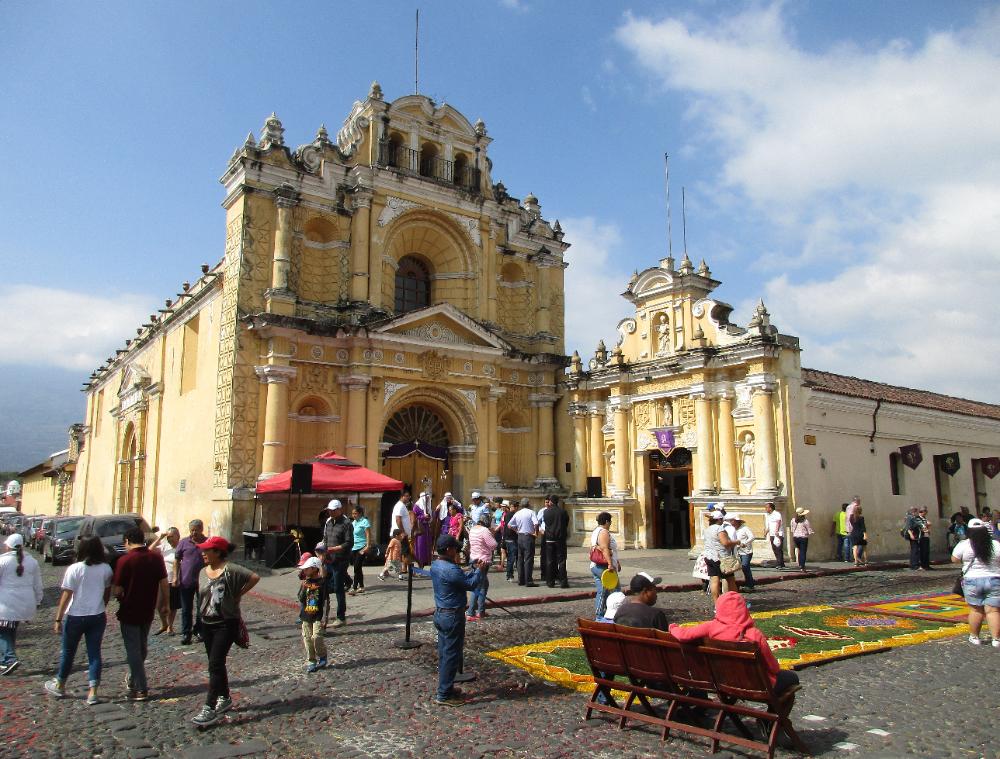
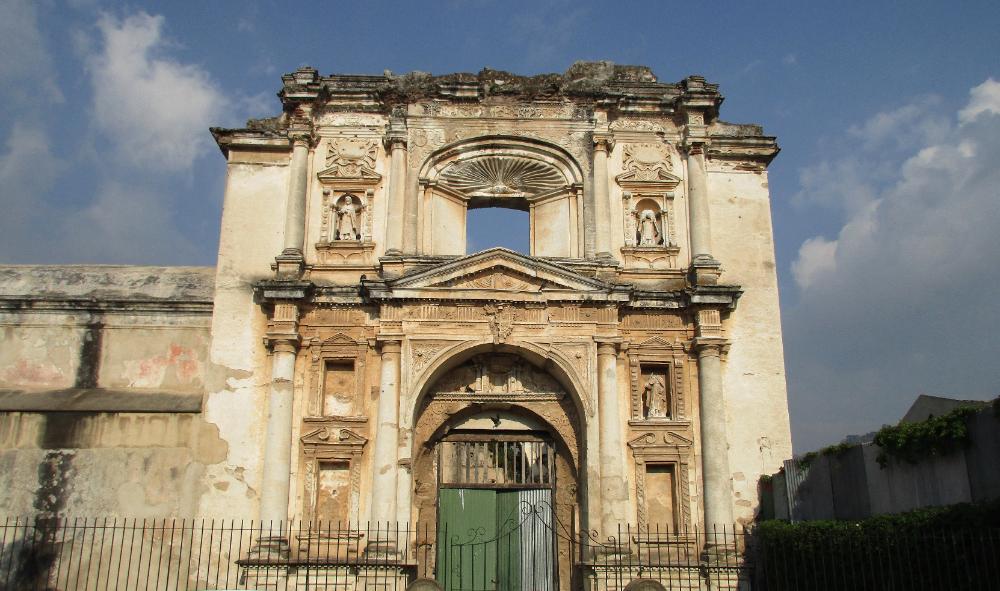
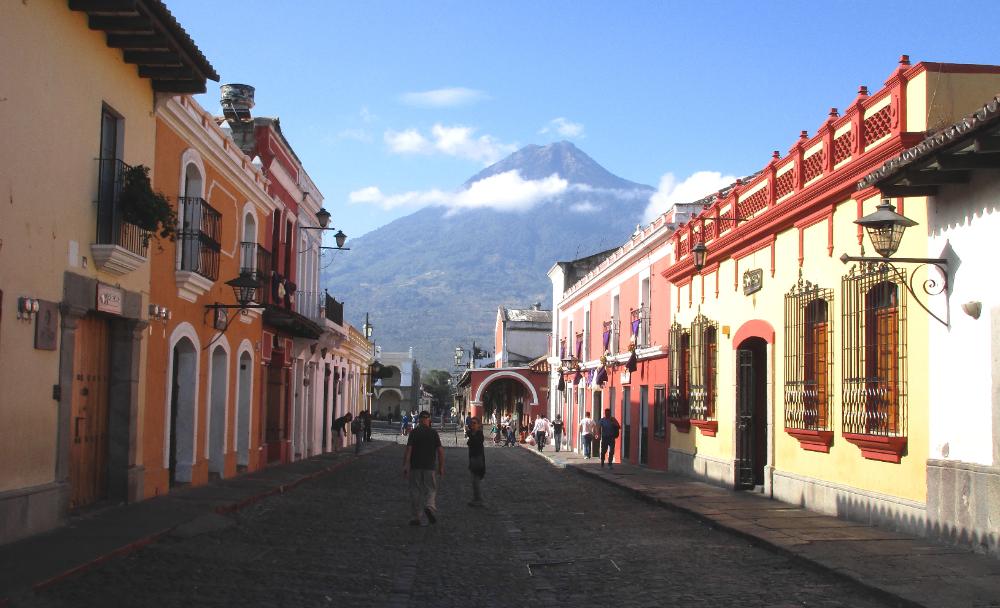
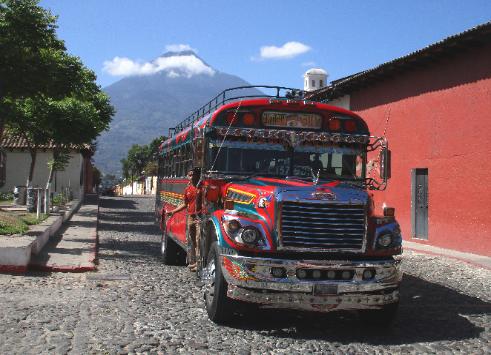
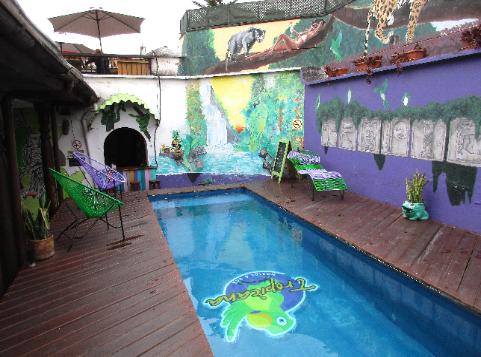
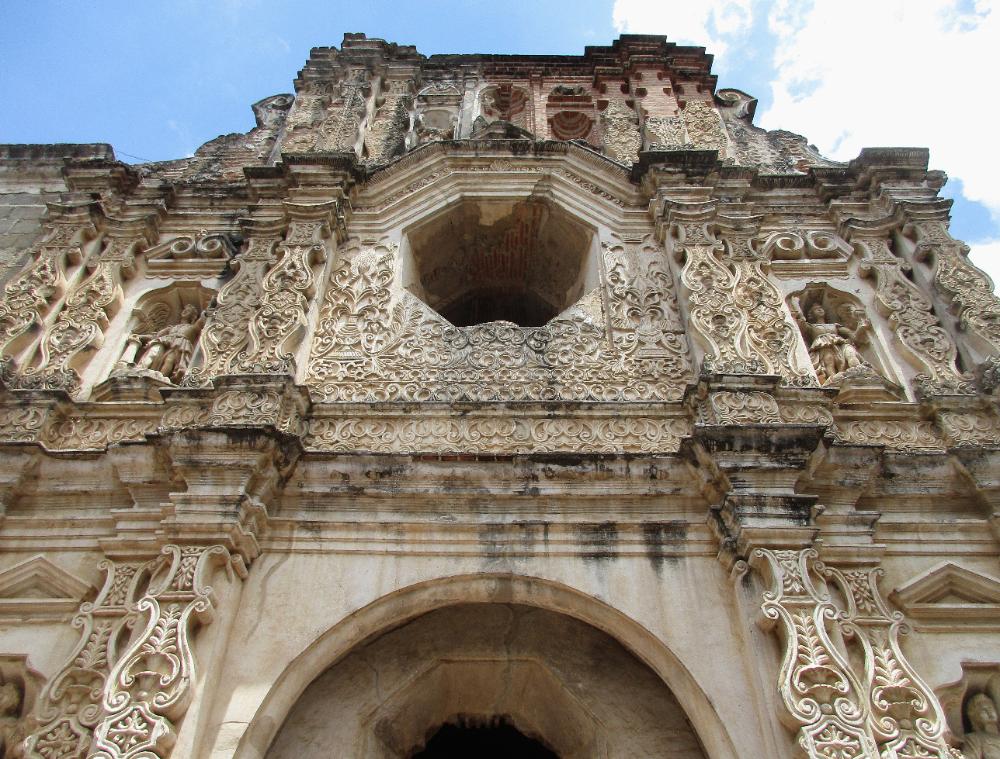
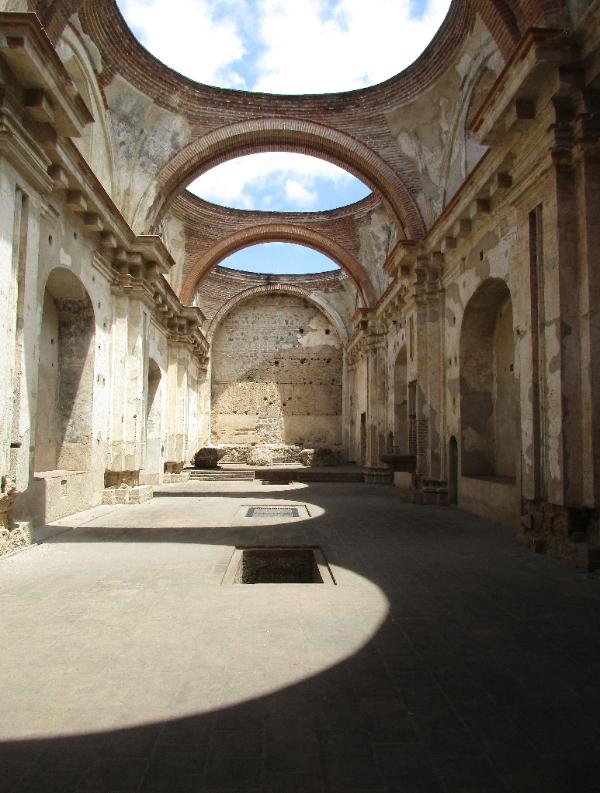
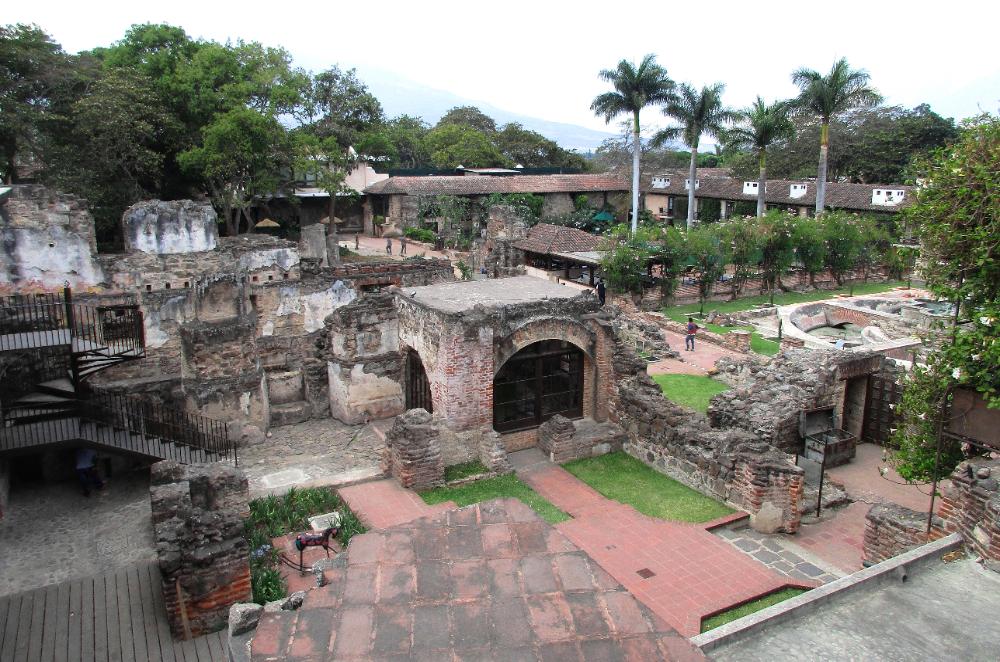
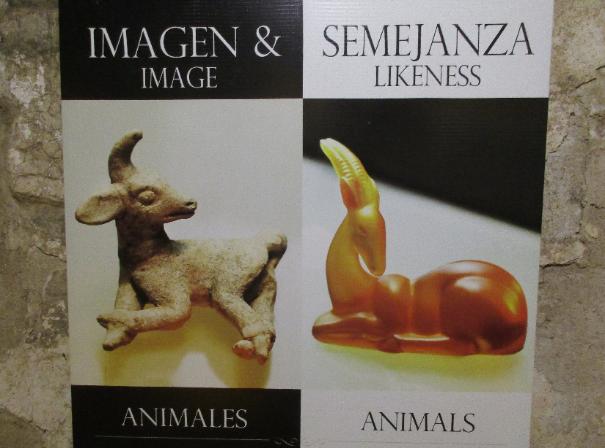
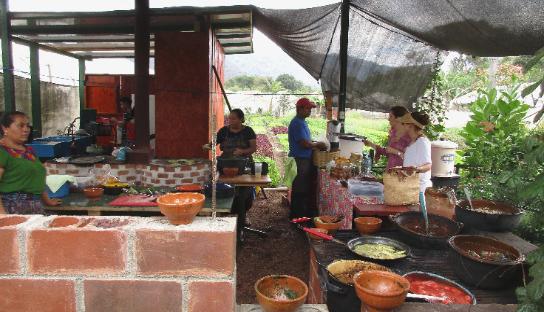
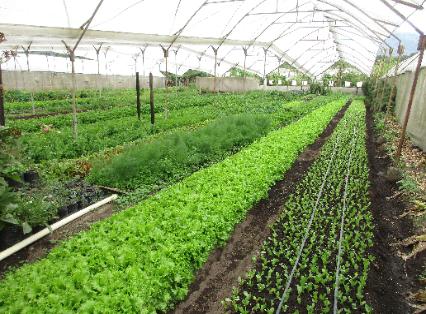
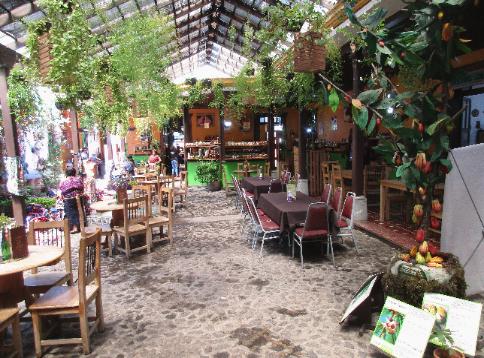
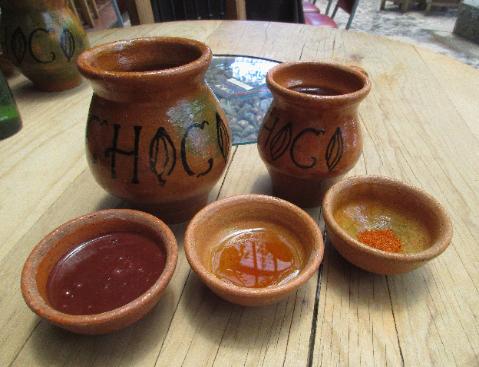
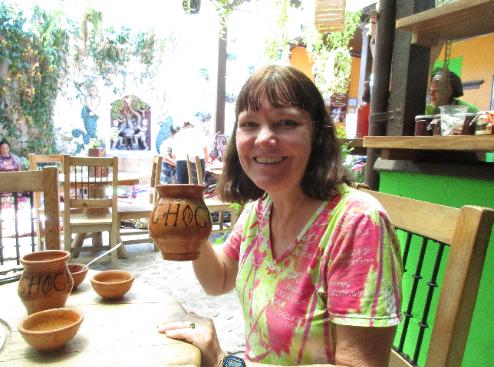
| Cerro de la Cruz is a hill with a cross on top that offers a terrific overlook of Antigua. Massive Volcan de Agua dominates the view. |
| Antigua, Guatemala -- A Quick City Tour |
The spectacle of Semana Santa dominated our
time in Antigua but we also made sure to see
the key sights of this historic city. Founded by
Spanish conquistadors in 1543, it thrived as the
capital of most of present-day Central America
until a series of devastating earthquakes in
1717, 1751, and 1773 finally led to its near
abandonment. The capital was relocated to
present-day Guatemala City, and Antigua
remained a backwater until recent times. Thus
the city has a "time capsule" feel to it with its
original cobblestone streets and historic (if
earthquake-damaged) churches and ruins.
At its peak in the 1770s Antigua had some
60,000 inhabitants: more than the 50,000 it has
today. We liked its small city feel, and its scenic
surroundings are hard to beat with no less than
three volcanoes encircling it. Volcan de Agua is
the most dramatic, looming just to the south.
Another thing we loved: Antigua's location in
the central highlands of Guatemala. This means
its temperatures year-round are just about
perfect. Many buildings have neither AC nor
heat because they simply don't need them.
time in Antigua but we also made sure to see
the key sights of this historic city. Founded by
Spanish conquistadors in 1543, it thrived as the
capital of most of present-day Central America
until a series of devastating earthquakes in
1717, 1751, and 1773 finally led to its near
abandonment. The capital was relocated to
present-day Guatemala City, and Antigua
remained a backwater until recent times. Thus
the city has a "time capsule" feel to it with its
original cobblestone streets and historic (if
earthquake-damaged) churches and ruins.
At its peak in the 1770s Antigua had some
60,000 inhabitants: more than the 50,000 it has
today. We liked its small city feel, and its scenic
surroundings are hard to beat with no less than
three volcanoes encircling it. Volcan de Agua is
the most dramatic, looming just to the south.
Another thing we loved: Antigua's location in
the central highlands of Guatemala. This means
its temperatures year-round are just about
perfect. Many buildings have neither AC nor
heat because they simply don't need them.
| North of Parque Central is Santa Catalina Arch -- the iconic symbol of Antigua used in pretty much every tourist brochure ever made. If you pass through the arch and look back, you can frame Volcan de Agua under it. Nice! |
| Continuing north, you arrive at La Merced Church. Some of the biggest Easter processions begin and end at this church. It was built so squat and thick that it survived the spate of earthquakes that destroyed so many others. |
| South of Parque Central are a few more churches and ruins worth seeing. San Pedro Hospital and Monastery was founded back in 1636. It sits across from a popular city park. |
| Historic tour over! Right next to San Francisco Church is a flourishing market offering fruits, vegetables, street vendor stands, and handicrafts. |
| Random ruins dot the entire city. For instance, I have no idea what this is (or was), but it's pretty impressive. |
| We stayed at Tropicana Hostel's one private room -- affordable even during Easter Week. (Wonderfully central but a bit of a party hostel!) |
| This elaborate facade at Santa Clara Convent is not visible from the street -- it was a "private" facade for the nuns only, so you'll only see it once you enter the premises. |
| Just around the corner are the extensive ruins of Santa Clara Convent, built in the early 1700s and destroyed later that same century by -- an earthquake. The central cloister with its fountain is such a tranquil spot. |
| The ruins of the nave and main altar are especially dramatic. If you enjoy open-air ruins as much as we do, then don't miss Santa Clara Convent. |
| Heading south (and a little east) from Cerro de la Cruz is the swanky Santo Domingo Hotel, set amidst the ruins of an old convent destroyed by (you guessed it) an earthquake. You can tour the ruins plus several museums sprinkled amidst the ruins for a small fee. This is the view from the mirador (overlook). |
| The best museum at Santo Domingo juxtaposes ancient Mayan art with modern glass art. “Image and Likeness” they call it. For some reason this really works and makes the ancient Mayan art seem more approachable. |
| If you're looking for good food, we'd recommend Samsara in town (especially for vegetarian) and Caoba Farms south of town. It's a pleasant 15-minute walk and is very much a farm-to-table sort of place. |
| One other fun activity is the Choco Museo (chocolate museum) just north of Parque Central. You can sample chocolates and visit the little museum for free (but you do pay if you want to take the chocolate-making class). |
| For a small fee (~$3 US) you can prepare your own Mayan hot chocolate the way the Mayans used to drink it. Just mix melted chocolate, honey, and spicy red pepper (to taste) with hot water. Delish! |
| Nothing wrong with this view! In addition to Volcan de Agua ( 3,766 m / 12,356 ft), you can partially see two other volcanoes to the right: Volcan Acatenango (which we climbed), and Volcan de Fuego (which we watched erupt multiple times from the slopes of Acatenango). |
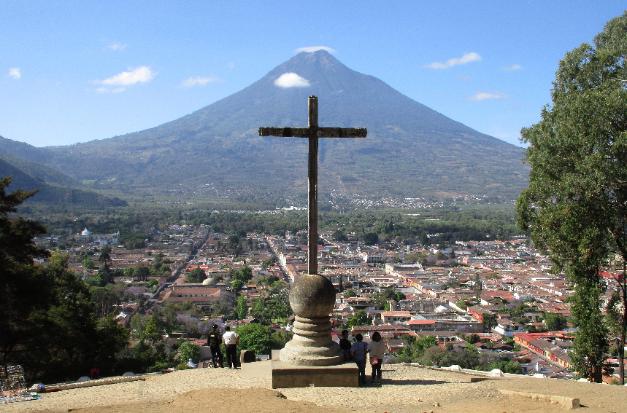
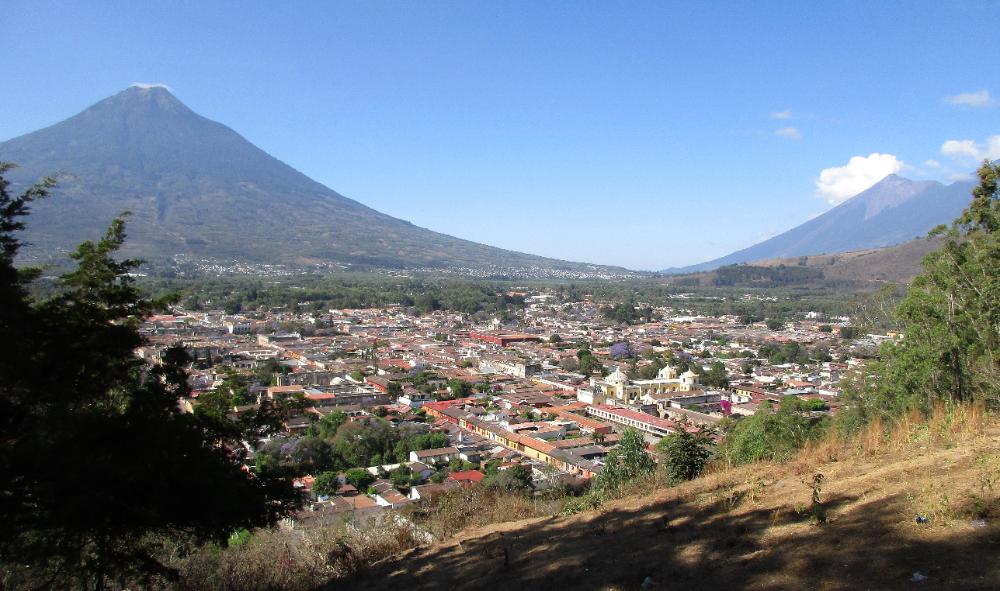
| Now let's take a quick tour of the city. Santiago Cathedral stands front and center on the Parque Central (Central Park) so you'll see it a lot as you wander around the city |
| Parque Central itself is the perfect place to people watch and relax. As you can see, many locals and tourists are doing just that during another pleasant day in the central highlands. |
| On the south side of Parque Central is the colonial Residence of the Captain General. Our good friend Volcan de Agua rises directly behind. (You can always tell which way is south by locating Volcan de Agua.) |
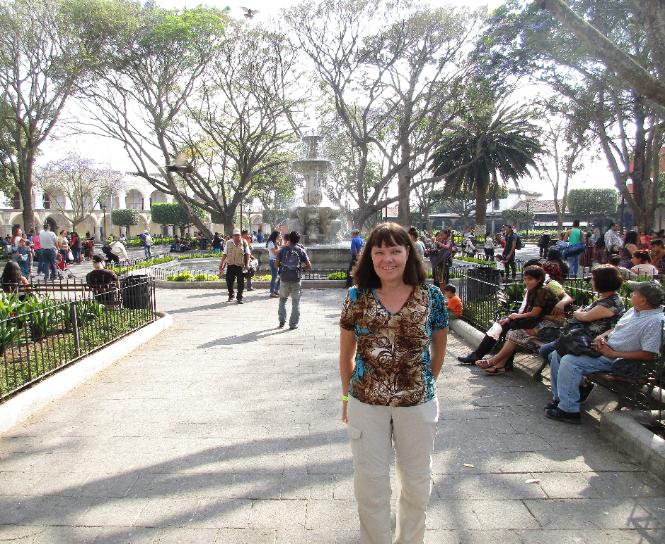
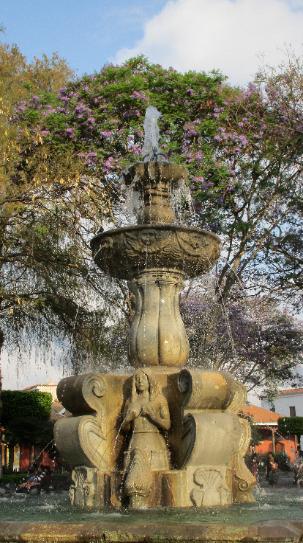
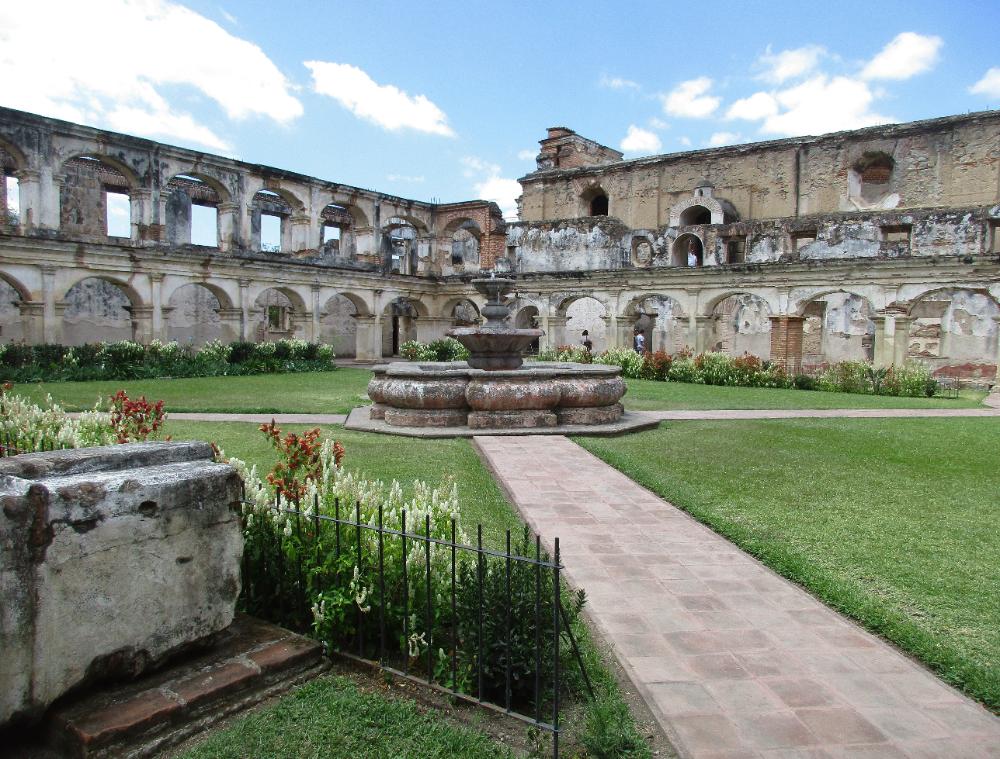
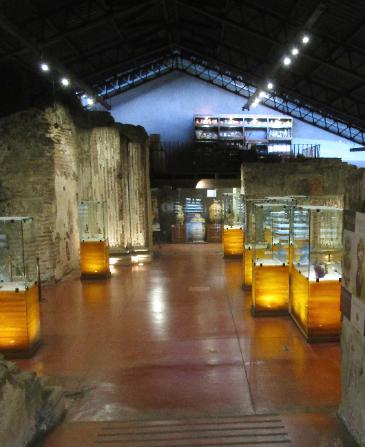
| Northeast of La Merced Church is the starting point for the 20-minute hike up Cerro de la Cruz, so if it's a clear day be sure not to miss it |
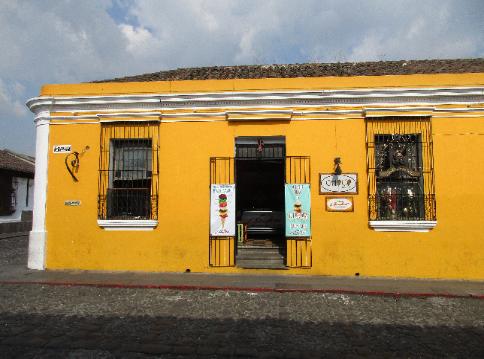
| If you're looking for more to do, just take a colorful "chicken bus" to a nearby town to check out handicrafts and gobble up more central highlands scenery |
